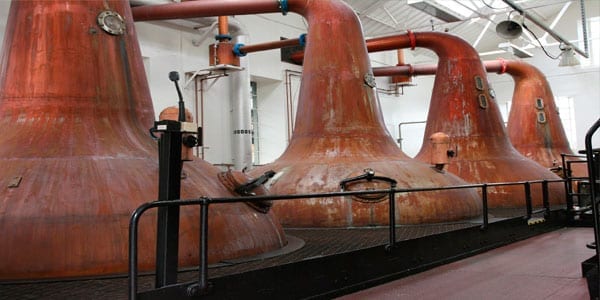
The difference between the wine and beer, on the one hand, and so-called liqueurs or spirits, on the other, is distillation. While he came, the beer and sake, among others, they produce alcohol through the transformation of sugars. Through a fermentation and thanks to microorganisms called yeast. In the case of liquors, it is achieved through a process called distillation.
What is distillation?
But what is really a distillation? And what is it and why is a second or subsequent distillation done? We will try in this first article to Great Products answer these questions.
Distillation It is the evaporation of the most volatile substances from a liquid and their subsequent recovery by condensation. This recovery is carried out by means of a coil that is cooled and helps condensation. Being the alcohols the best volatile and much of the water remains as a residue. Also the heaviest elements of that substance.
The team that performs distillation is the call still. In the first distillation, temperatures of 100 degrees are usually reached. The process takes eight hours. In this way, a liquid with a graduation of around 25-30º is obtained. This liquid from the first distillation contains alcohols such as methanol, propanol and butanol. These do not have pleasant aromas and cause headaches as is the case with methanol.
For this reason, the second and subsequent distillations are made in order to keep the finer alcohols. Also with the most interesting organoleptically speaking. These are also attractive alcohols in case we want to age the liquor.
The second distillations are made with a lower temperature, but with a longer cooking time. Without a doubt, it is a delicate process that requires mastery to carry it out.
The distillates best known are the whiskey that occurs with barley and el bourbon (with corn). Also the Geneva (with cereals and later aromatization with juniper and botanicals). Then there is the tequila (with agave), the ron (with sugar cane) and the cognac with the distillate of wines as well as the Peruvian pisco. The grappa and pomace They are produced with the skins (skin and seeds) of the grape.







